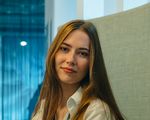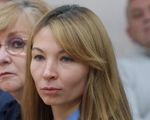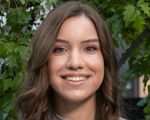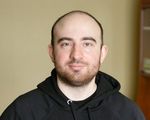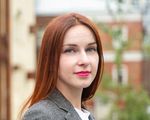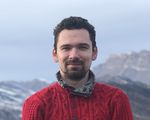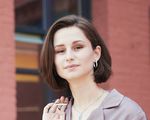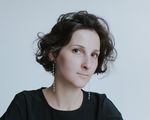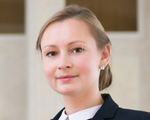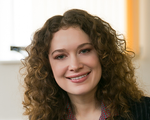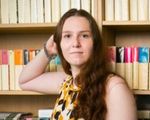About Success Builder
How do you find your place in life? How do you find something to do that both comes naturally to you and makes you happy? The answer is that you have to apply the knowledge you’ve gained from university and from life itself correctly. The Success Builder Project features HSE University graduates who have discovered themselves through an interesting business or an unexpected profession. The protagonists share their experiences and lessons learnt and talk about how they’ve made the most of the opportunities they were given.
When the concept of ‘lifelong learning’ becomes the norm, it is no longer in the spirit of the times to just take it easy after receiving that coveted diploma. Leonid Ilyukhin earned bachelor’s and master’s degrees from the HSE Faculty of Economic Sciences and now lectures in the fine arts at the Vivarium Novum Academy in Rome. In this interview with Success Builder, Mr. Ilyukhin explains how he converted mathematical thinking into artistic expression—and became an expert in the field to boot.
Was HSE University well-known when you were admitted in the 2000s? What prompted you to apply?
HSE University already had a serious reputation by the time I applied in 2004. In many ways, it was seen as an experimental and very new school in Russia, and the most interesting people were going there. In the field of economic education, it was definitely considered the best. I had older friends who entered HSE and gave me very specific feedback, and this helped me see what opportunities were available for me.
I took an HSE preparatory course and earned high enough marks in an Academic Olympics to be admitted to HSE University without having to take entrance exams. The Economics Faculty was considered one of the key and most prestigious faculties and I aimed to enter it, although I could have studied in others: at school, I had good grades in all my subjects, including the humanities.
How did you fare with the higher level math?
I prepared thoroughly for my studies at HSE by attending preparatory courses where Alexey Bykov and Alexander Gofman had an interesting way of teaching math. In my first year, I studied mathematical analysis and linear algebra and micro- and macro-economics, and I gradually came to understand the relationship between the humanities and quantitative subjects. I also took an optional course in French.
At that time, the university was actively expanding geographically and I took a strong interest in the historical buildings to which the faculty relocated
I managed to have classes in the buildings on Gnezdnikovsky Lane and Myasnitsky and Pokrovsky Boulevards. This is part of the new campus now, but at the time, it was a newly vacated Military Engineering Academy. Students found interesting artifacts the cadets had left behind, constantly got turned around in the passageways between buildings (which probably happens now, too) and often went up on the rooftops to admire the views of Moscow, which was possible to do then.
When did you decide to switch to painting? Why did you go on to get a master’s degree in economics?
In my fourth year, I still didn’t know what I wanted to do. When it came time to choose my major, I opted for mathematical methods and, just out of inertia, entered the master’s programme. The classes turned out to be interesting and intellectually stimulating. Emil Ershov and Grigory Kantorovich, our senior lecturers, were great. I really like the learning process itself and didn’t think about what I would do with this knowledge afterward.
I had been drawing at an amateur level since childhood, but didn’t consider this hobby a possible profession. After my first year in the bachelor’s programme, a friend gave me a graphic tablet for my birthday and I often drew on it. HSE opened an art studio then, and this spurred my interest in drawing. On the Internet, I happened upon the work of a friend who was doing computer graphics as a student at the Moscow State University Faculty of Computational Mathematics and Cybernetics. He advised me to take a course at the Glazunov Academy to master the basic skills, so I signed up. After a while, I decided to prepare in earnest to enter the academy itself.
The entrance exams coincided with defending my master’s degree, but I didn’t get into the academy that time: my skills weren’t up to speed, so I had to postpone admission for a year. I got a job at Rosatom with the Energopromanalitika company that analysed electricity consumption statistics. This was the first and only time that I worked in the specialty I received at HSE. I managed to save enough money to get a second higher education, and in 2011 I tried again to get into the Glazunov Academy—and this time I succeeded.
If I’m not mistaken, the Glazunov Academy is rather conservative. Did you specialise in academic drawing?
Glazunov is a rather controversial figure, but I am grateful to him for creating a first-class educational institution that teaches traditional painting. It wasn’t easy to create a university in Moscow that teaches classical drawing methods during the modern art craze; that’s a major accomplishment. I found it interesting to develop in the canonical genres of painting, so I appreciated the academy’s contribution in supporting the old school. This university’s story is a bit like HSE’s: it opened in 1988 and, in a short time, has become the standard-bearer in its field.
The Glazunov Academy can be compared to a conservatory of music where different styles become accessible only after studying and gaining a deep understanding of the classics
Jazz, rock, pop and other modern genres require a basic literacy that is obtained on the basis of classical works—only once you have this foundation can you choose your area of focus as a professional.
And although I still enjoyed CGI and digital painting, I found more and more pleasure from working with analog material.
How did you manage to realign your thinking and make the transition into the realm of art?
My previous education helped me formalise educational processes and find an algorithm for solving new problems. As strange as it might sound, studying economics at HSE helped me become an artist. The average age of art school students is higher than in other institutions because many enter after receiving a secondary specialised education (art school) and some, like me, already have a background in another field.
What’s more, people often don’t manage to get into art school on their first try. Some get in only after their second, third or even fourth attempt. Some art schools require a fairly high level of preparation for admission.
At the St. Petersburg Academy of Arts, for example, you often run into freshmen who are 25-30 years old. I got into Glazunov at 24. It was an absolutely conscious step— getting an education in art is a choice in favour of self-realization, not prestige or trends. In this sense, the previous university experience works as a filter. It pushes you towards what you are happy and effective in, but by the reverse method—that is, by coming to understand the profession and your place in it and realising that ‘this is not for me’.
Studies at the academy last six years, for five of which you attend theoretical lectures and classes in drawing and painting in the workshop. The sixth year is devoted completely to your thesis project in which you work on a single painting for a whole year. You must have a mature approach to such a fundamental immersion in academic aesthetics, and it helps if you’ve previously attended a good university before entering the academy.
How is an art education monetised?
I can only speak about the field of traditional figurative painting because contemporary art has its own huge market with many different areas and educational institutions such as the BAZA Institute—but this is not my area of expertise.
As for traditional painting, it is important to develop your personal brand and sell your work by exhibiting in galleries and major marketplaces like Saatchi or Singulart. Many of my fellow students produce monumental paintings, both secular buildings (villas or mansions) as well as religious (the Church is a fairly large customer). Murals in historical churches often require restoration as well.
Figurative artists can work in various media formats—that is, they can serve the entertainment industry in terms of computer games, movies and advertising. It gives you an idea of how many artists are required in various fields and tasks.
In the digital design market, games are now the hottest and most profitable area, especially casual games for mobile devices. As a specialist in classical drawing, easel painting and oil painting, I haven’t worked in games, but I did have a good teaching experience in the field, teaching drawing technique to the employees of Game Insight.
The film industry needs storyboards, 3D graphics, costume designers, post-production graphics, special effects, detailed backgrounds and so on. In the 3D field, an engineering or technical background can be a big plus.
During the pandemic, various online courses in drawing and computer graphics gained incredible popularity
In my opinion, the art education market is currently even more promising commercially than the industry itself inasmuch as during the pandemic, various online courses in drawing and computer graphics gained incredible popularity. A number of online art and blended learning schools have emerged such as Scream School, CG Lab and others.
Was it easy for you to find a place in such a large market?
During my first years at the academy, I didn’t work at all because my studies were very intensive. I occasionally did custom-ordered oil paintings, mostly copies of famous paintings, and in my fourth year I heard about a vacancy at the Scream School where I began teaching anatomy for artists and life drawing. When they started classes in Digital Illustration, I began teaching a course on color. I liked the combination of traditional knowledge and modern materials and working on the computer. What’s more, I myself made great progress in many respects because teaching a subject makes it clearer for you as well.
At some point, my classmates and I became entrepreneurs and opened our own painting studio. We were very lucky with the rent, but the premises began renovations at the end of 2019 and we had to look for new options. After the quarantine, we found a place, but two months later I received a job offer from the Vivarium Novum Academy in Frascati, near Rome, and I accepted.
How did Vivarium Novum learn about you? What kind of an institution is it?
They learned of me thanks to my thesis project. A work that you labor over for a full year builds your reputation in the art market. In my case, it was a large painting, four meters wide, on the theme of ‘Apollo and Dionysus’, a traditional painting in the spirit of antiquity. I made a step-by-step description of how I created it, spoke in social networks and blogs about the difficulties of working in a monumental format, documented the process and shared life hacks. Somehow, a photo of my thesis project got a good indexing in Google Images and Vivarium Novum representatives found me there.
The fact is that Vivarium Novum is a particular type of place and is essentially a centre for the study of antiquity. Academy students study Latin, Greek, philosophy and music. This year, the academy opened an art department and was looking for artists with traditional execution and paintings on classical themes.
Vivarium Novum opened in the 1990s. As the New Yorker writes about its director, Luigi Miraglia, he ‘speaks Latin better than anyone else alive today’, and the whole idea of the academy is to revive the traditions and methods of the Renaissance schools and to form a person’s entire worldview. The academy moved to the building in Frascati only in 2016. It is an amazing place—a 17th-century villa by the architect Francesco Borromini with a special, inspiring atmosphere and unique frescoes.
After speaking to them on Zoom, I went to Frascati for an in-person meeting and was incredibly happy to see the best Roman museums without tourists because all public institutions had only just begun opening after the pandemic. After discussing the details of the work, I returned to Moscow, finished out the year at the Andriaka Academy where I taught academic drawing, and then moved to Italy. All of the Vivarium Novum students and staff live right on the academy campus.
In the summer, I taught an intensive course in drawing, painting and composition. I currently have a drawing class for beginners, and I am also doing the interior design for the academy’s library.
What does it feel like for an artist to move to Italy?
The move made a enormous impression on me. I had been to Italy before, in Florence, but it was during the New Year’s holiday. There were tourists and constant time pressures. Now I could take my time and just be here.
There is such a phenomenon as Stendhal’s syndrome—when your head spins from a riot of aesthetic impressions. This is what I felt at first
I am still amazed at how indifferent the Italians themselves are to the historical architecture around them. For them, it is commonplace—ancient Roman ruins in the city center, palimpsest buildings. Here, there is more history and ancient works of art per square meter than in any other country in the world. There are museums with serious collections in literally every city. In the 18th-19th centuries, travelers went on grand tours of Italy that lasted two or three years because it was impossible to see all of this any faster.



